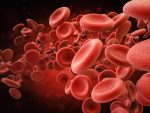New Blood Stem Cell Roadmap May Help Advance SCD Treatments

A team of researchers has created the most comprehensive atlas, or roadmap, to date of each step of human blood stem cell development — helping them identify the previously unknown molecular signature of blood stem cells and ending a longstanding debate on these cells’ specific cellular origin.
The data, open to the public through an online cell atlas, are expected to help scientists generate fully functional blood stem cells in the lab. That’s a task that, according to the team, has so far been difficult to attain and is crucial for developing blood stem cell transplant-based therapies.
As such, the new atlas may help expand treatment options for sickle cell disease (SCD) and other inherited blood disorders, as well as for blood cancers, Hanna Mikkola, MD, PhD, the study’s senior author and a professor of molecular, cell, and developmental biology at the University of California, Los Angeles (UCLA) College, said in a university press release.
“Nobody has succeeded in making functional blood stem cells from human pluripotent stem cells because we didn’t know enough about the cell we were trying to generate,” added Mikkola, who is also a member of UCLA’s Jonsson Comprehensive Cancer Center and Eli and Edythe Broad Center of Regenerative Medicine and Stem Cell Research.
Scientists do now, said Vincenzo Calvanese, PhD, one of the study’s co-first authors.
“We now have a manual of how hematopoietic stem cells are made in the embryo and how they acquire the unique properties that make them useful for patients,” said Calvanese, a UCLA scientist and a group leader at University College London.
“Now that we’ve created an online resource that scientists around the world can use to guide their research, the real work is starting,” Mikkola said, adding that “it’s a really exciting time to be in the field because we’re finally going to be seeing the fruits of our labor.”
Analyses leading up to the creation of this roadmap were reported in a study published in the journal Nature, titled “Mapping human haematopoietic stem cells from haemogenic endothelium to birth.”
Blood stem cells, also called hematopoietic stem cells, have the ability to both make unlimited copies of themselves and mature into all types of blood cells in the body.
For decades, life-saving transplant treatments for blood and immune diseases have relied on blood stem cells isolated from the bone marrow of donors and the umbilical cords of newborns. However, this approach is limited by a shortage of matched donors and the low number of stem cells found in umbilical cord blood.
In theory, these cells also can be generated in the lab from human pluripotent stem cells, which can give rise to almost every type of human cell. These pluripotent stem cells can be directly collected from human embryos or generated from a person’s mature cells, such as skin cells, through a reprogramming approach.
The latter would allow researchers to create blood stem cells from a patient’s own cells, eliminating the risk of blood stem cell transplant rejection and the need for immunosuppressive treatments.
However, generating these cells in the lab has proved difficult to achieve, partly due to the lack of the precise instructions needed to make self-renewing blood stem cells. To date, scientists had figured out only how to generate short-lived blood progenitor cells, which can only produce limited blood cell types.
By identifying the precise molecular signature of blood stem cells and their changes during development and maturation, researchers have now provided the resources to assess how close cells created in the lab are to transplantable stem cells.
“Previously, if we tried to create a blood stem cell from a pluripotent cell and it didn’t transplant, we wouldn’t know where in the process we failed,” Mikkola said.
“Now, we can place the cells in our roadmap to see where we’re succeeding, where we’re falling short and fine-tune the [maturation] process according to the instructions from the embryo,” she said.
To create the roadmap, researchers used state-of-the-art technologies. This allowed the identification of molecular signatures and the functions of thousands of individual cells, as well as their location in the embryo.
With this, the team was able to follow blood stem cells as they emerged in the aorta — the main and largest artery in the body — and moved through several locations during their maturation. Ultimately, the cells arrived in the bone marrow.
Mikkola noted that immature cells must move through different locations to learn how to do their job as blood stem cells, just as surgeons need to go through different stages of training to learn how to perform surgeries.
The new roadmap revealed specific milestones in blood stem cell maturation, including their arrival in the liver, where they acquire specific markers of mature blood stem cells.
It also pinpointed the cells’ exact precursor in the aorta wall, resolving a longstanding controversy about their cellular origin and the environment and instructions needed to make a blood stem cell rather than a blood progenitor cell.
The blood stem cell atlas also may be used to better understand how blood-forming cells in the embryo contribute to human disease, the investigators said.
The research team included scientists from the University of Tübingen, in Germany, and the Murdoch Children’s Research Institute, in Australia.








